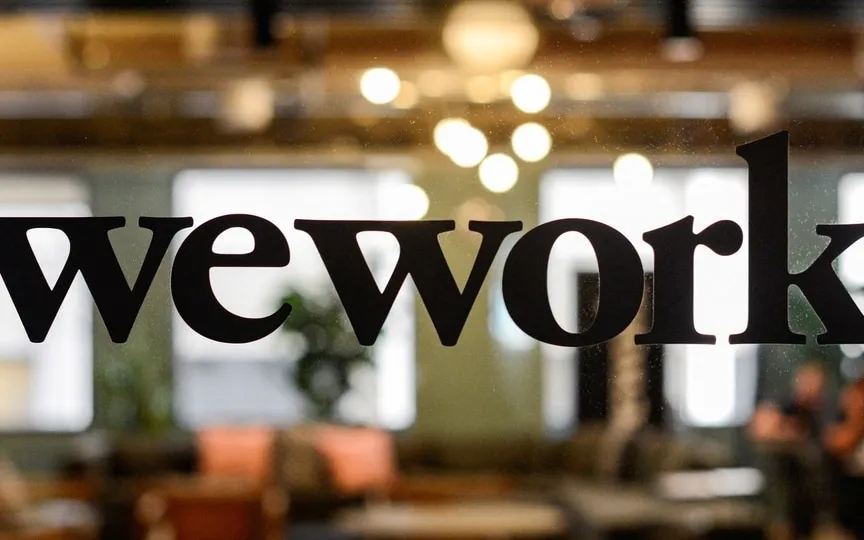The Epic Journey of WeWork: From Incredible Rise to Bankruptcy in 10 Steps
After a nearly ten-year period of seemingly unstoppable growth and excessive spending, WeWork has now filed for bankruptcy. Although there is a possibility for the co-working company to recover and continue operating in some capacity after going through Chapter 11, this filing represents a significant decline for a business that was considered one of the world’s most valuable startups just last year in 2019.
After four years of near-constant derision, it can be hard to remember how promising WeWork once looked. Here are some highlights of the company’s rise and fall:
1. Beer kegs in the office
Adam Neumann and Miguel McKelvey started WeWork in 2010 by selling desks and an ideal of what an office should be like. One of their main services was draft beer. WeWork had the backing of some powerful venture capital firms such as Benchmark. In 2015, Bloomberg Businessweek put Neumann on the cover for the first time, with a headline that captures the early confusion of WeWork’s VC-driven, work-hard, play-hard vibe: “Is This the Office of the Future or a $5 Billion Waste of Space? Let’s Talk by the Barrel.” There would be many more magazine covers around the world.
2. Employees catch mice and clean up vomit from the phone booth
In an episode of Bloomberg Technology podcast Foundering’s WeWork-focused season, employees describe the exciting, chaotic, party-filled atmosphere of the company’s offices and how it affected the people who work there.
3. Early warning signs
In 2016, WeWork cut some of its staff, and Neumann warned his employees at a general meeting that the company had drifted into a “culture of consumption.” (In the following years, the company spent much more lavishly than then.) Around the same time, employees began to sue the company for alleged labor violations.
4. Summer camp
An important part of WeWork’s corporate culture was an annual summer party for employees and customers, featuring canoes full of beer, rah-rah speeches from executives, and headliners from artists like Lorde, The Weeknd, and Florence the Machine. In another episode of Foundering, former employees said the experience could be nerve-wracking — like going to Coachella, but organized by your boss — but the celebratory energy and sense of purpose kept them motivated.
5. For adults in the dormitory
WeWork already promised to blur the boundaries between working life and social life. Why not home too? The company opened two residential apartment buildings called WeLive; The slogan was “Build a world where no one feels alone”. I lived in one for five days to find out if the corporate-community lifestyle it promises really works. “I get this amazing quality of life,” one resident told me. “The only thing I’m missing is a door and a wall.”
6. WeGrow
Venture capital kept coming, and SoftBank Group Corp. added to things when the company came on board in 2017. WeWork poured money into a wide variety of ventures. One of them was a private elementary school called WeGrow in Manhattan, located in WeWork’s headquarters, and the interior was designed by the famous Architecture firm Bjarke Ingels Group. Adam Neumann’s wife and the company’s brand director, Rebekah Neumann, said the school’s goal was to “raise informed global citizens” who “understand what their superpowers are,” she said at the time, “and use those talents and gifts to help each other and help the world.”
7. We
By 2019, WeWork had rebranded as We Co., with a mission to “raise global awareness,” and was preparing for a public listing. As part of the rebranding, the company agreed to a $5.9 million stock deal with Neumann for a set of trademarks associated with the name We, which he owned through a holding company. Neumann returned to the cover of Businessweek, this time pitching a real estate fund called ARK. (He joked to me that it stood for “Adam, Rebekah and Kids.”) We stuck with the company’s unusual financial structure and asked the cover line, “Will it ever make money?”
8. You are the Creator
Before its 2019 IPO, WeWork’s visions of itself became even grander. The company had spent tens of millions of dollars on the Creator Awards, a series of live pitch competitions with celebrity judges like P. Diddy and performances by bands like the Red Hot Chili Peppers. WeWork even pitched TV networks to turn it into a show. By then, the company had also bought the iconic Lord & Taylor building in Manhattan in an $850 million deal and spent tens of millions on other tangential purchases, including a private jet, an SEO firm, and stakes in a superfood startup and a wavepool manufacturer.
9. IPO flop
In the space of a few weeks in the fall of 2019, WeWork’s big public plans fell through, Neumann was ousted, and the company was scrambling for cash to stay afloat. What happened? Here’s the answer in a 13-minute video. In a few words, WeWork’s overspending and lax governance were its undoing.
10. March to Bankruptcy
Since 2019, WeWork has weathered the pandemic, gone public via a blank-check merger, gone through several interim and “permanent” CEOs, scaled back its real estate portfolio and limped along — until this August, when it raised doubts about its ability. to stay in business.
One more thing! ReturnByte is now on WhatsApp channels! Click here to join so that you never miss any updates from the world of technology.




